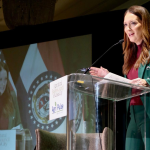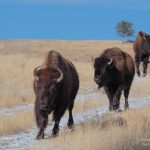A Few Thoughts by John Nalivka: The cost of regulations on ranching
Reading about the USDA’s concern for farmers and ranchers brings one thought to mind – the
impact of regulations. While I believe that Secretary of Agriculture Rollins has the best of intentions
for U.S. agriculture, I am not sure how the government can play a role in building cattle herds other
than to reduce regulations that lead to increased costs of production. With their finances benefiting
from record-high cattle prices, I do not believe America’s ranchers need any assistance from the
USDA to build cattle herds. Aside from the key issues that I have discussed over the last several
months that are currently playing a role in that decision, I tend to get nervous when I see the words
government and herd building in the same sentence!
Secretary Rollins was on the right track when she indicated in her September 25th Memorandum of
Understanding the agency’s “commitment to understanding and protecting U.S. ag producers
from burdens imposed by high input costs.” Taking that statement to the next step, many of those
high input costs are related to or are the direct result of regulations.
There are many costs associated with raising cattle, but a large share of those costs is associated
with grazing. Drought that limits or totally derails grazing is a key factor of the cattle cycle. Grazing is
the primary resource for raising cattle and in the Western U.S., a large share of grazing is on federal
land. Critical disputes often arise on Federal lands that can impact a ranch with a federal grazing
permit and oftentimes, impact ranch costs of production. The politics of managing wild horse
numbers is one of those.
Wild horses have once again become a major focus as sound grazing management. As has often
been the case, the wild horse numbers have simply become overwhelming and in the attempt to
remove horses, the Bureau of Land Management has met strong opposition and lawsuits. This has
been a major controversy in southwestern Wyoming. Ranchers who are dependent on federal
grazing leases are directly impacted by an issue like wild horses and it is not without a cost,
oftentimes, an exceedingly excessive cost. I know this from personal experience as an expert to
discuss the cost impact on the ranch in a court case that went on for 15 years.
We know why the U.S. cattle inventory has fallen to a 75-year low and costs of production have
played a key role. And, in that regard, the best advice I can offer to Secretary Rollins in her effort to
address these rising costs, which I do believe she is sincere in her statement, is to eliminate and
reduce regulations on the cattle industry.

